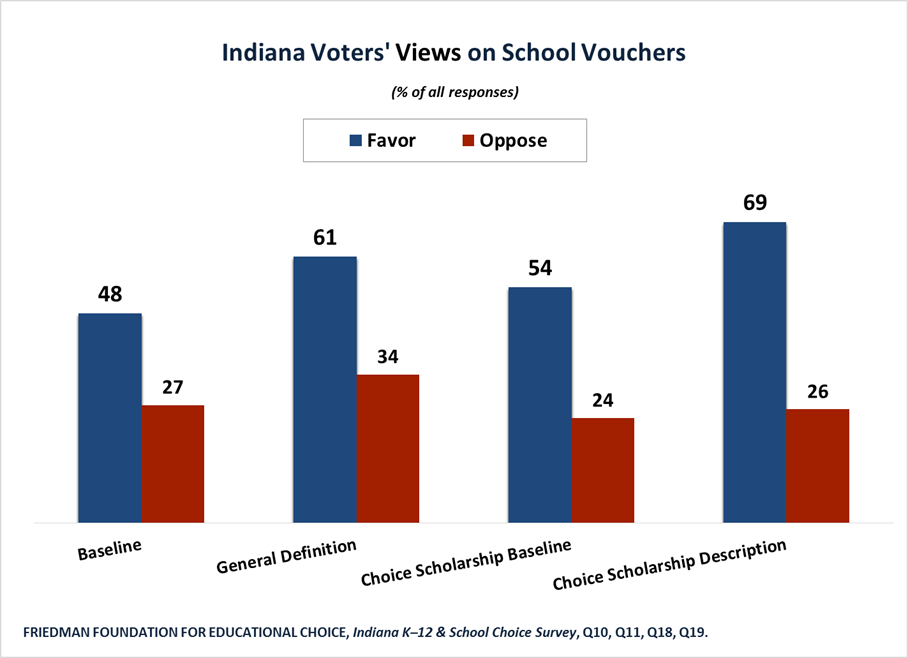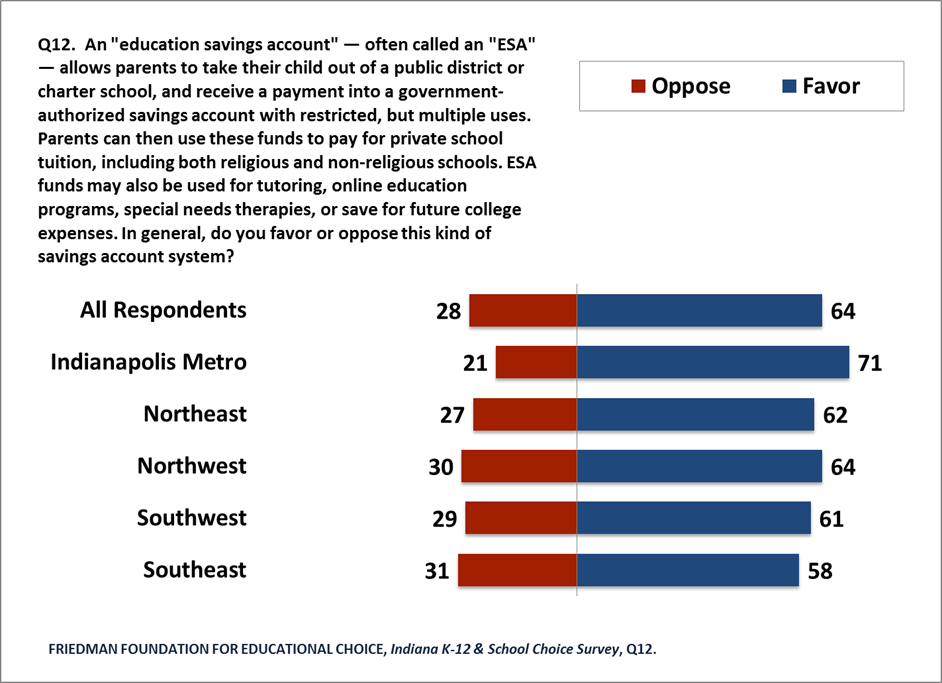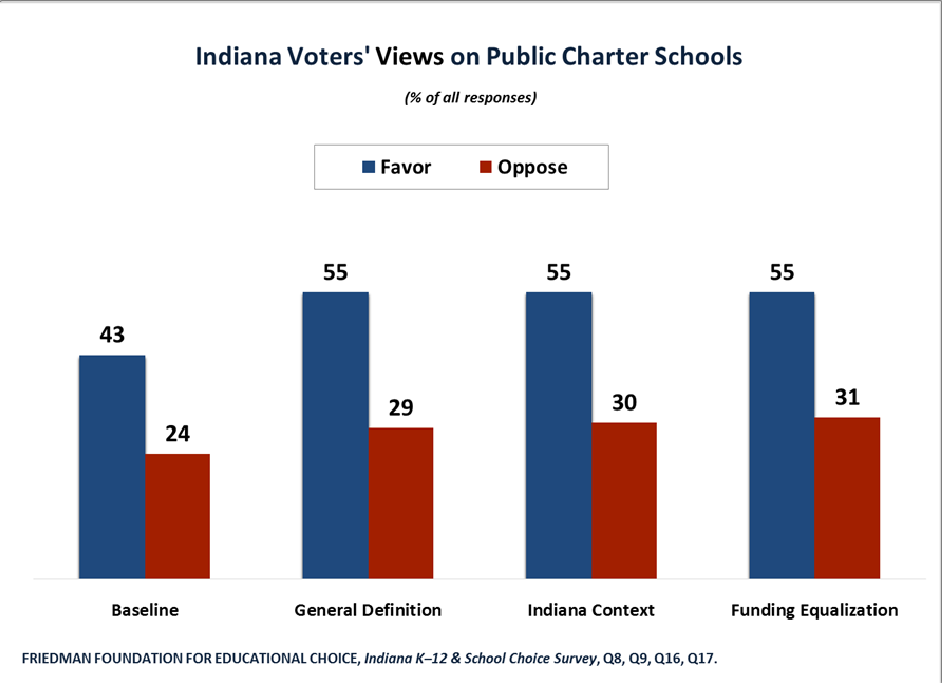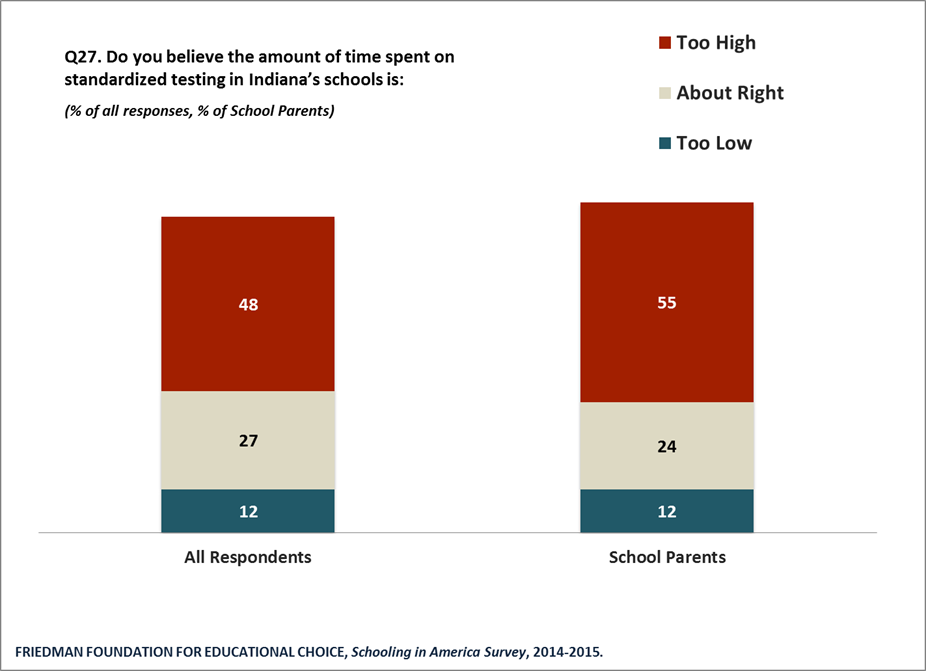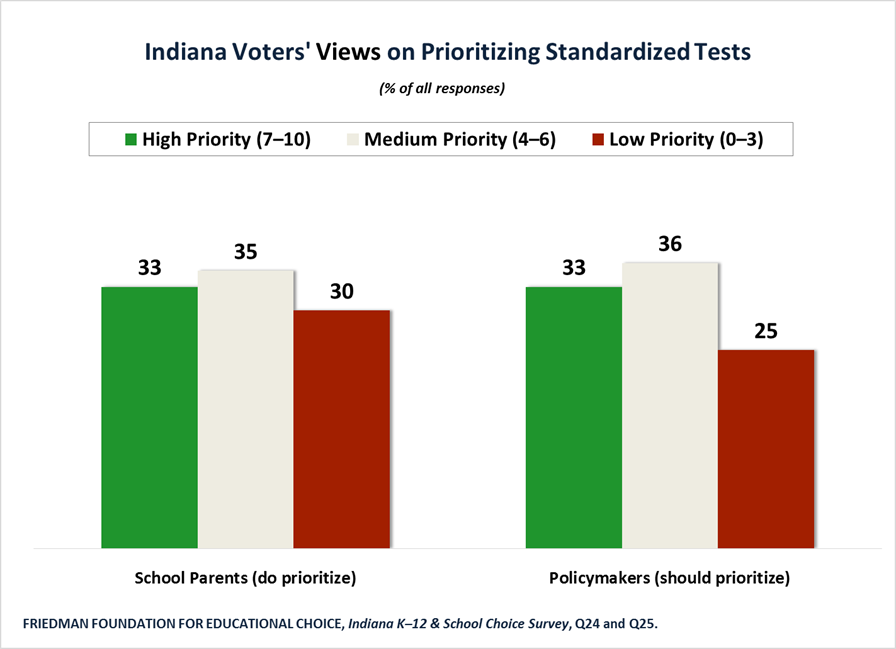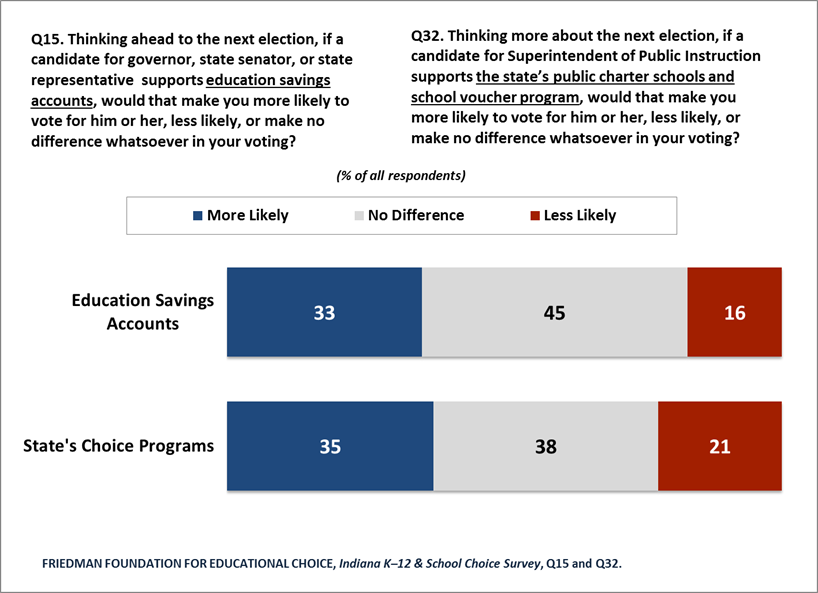Hoosier Views on Indiana’s School Vouchers and More Survey Snapshots
Education has been at the forefront for Indiana citizens and lawmakers ever since the second term of former Gov. Mitch Daniels’ administration.
Indiana legislators have given various education issues a turn on the front burner over the years—funding levels, funding formula reform, test-based accountability, school choice, third grade reading, teacher evaluation, and more.
But what do Hoosier voters think about current matters in K–12 education, specifically Indiana’s school vouchers and tax-credit scholarships, charter schools, standardized testing, and the coming election for State Superintendent of Public Instruction?
The following six snapshots from our Indiana K–12 & School Choice Survey shed some light on Hoosiers’ opinions on those topics and more.
Indiana’s School Vouchers
Hoosiers overwhelmingly support the Choice Scholarship Program—Indiana’s school vouchers. This school year, more than 32,000 students are using this program to attend a private school in the state.
Nearly seven out of 10 Indiana voters (69%) say they support the Choice Scholarship Program, compared with 26 percent who said they opposed it. The margin of support is very large (+43 points). The net intensity was high and in the positive direction (+29 points; 43% “strongly favor” vs. 14% “strongly oppose”).
In a preceding question that did not offer any description or context about the program, Hoosiers still supported Indiana’s school vouchers by a greater than two-to-one margin (54% favor vs. 24% oppose). Northwest voters (30%) and seniors (29%) were most likely to say they did not know the program.
Similar to the previous set of charter school questions, our interviewers asked baseline and follow-up questions about school vouchers generally before asking about the Choice Scholarship Program specifically. In the first question, respondents were asked for their views on vouchers without a definition or any other context. On this baseline question, 48 percent of the general population said they favored vouchers, and 27 percent said they opposed the idea. In the follow-up question, using a basic definition for a school voucher system, support rose 13 points to 61 percent, and opposition increased seven points to 34 percent.
In a surprise finding, a majority (55%) of those who said they were leaning towards or definitely voting for State Superintendent Glenda Ritz said that they favor the Choice Scholarship program. Self-described supporters of a generic Republican challenger (78%) and undecideds (73%) were relatively more likely to say they favor the program.
Views on K–12 Education in Indiana
When asked about the state of K–12 education in Indiana, the mood of voters tends to be very negative. That observation persists across a range of indicators: 33 percent believe the K–12 public education system is going in the “right direction,” while 54 percent said “wrong track.” Only 42 percent rated Indiana’s public school system as good or excellent, while 54 percent chose fair or poor. Thirty-eight percent had favorable views of K–12 education policies, whereas 49 percent had a negative view. Just 26 percent said K–12 education is “better off than in 2012,” while 38 percent said K–12 education is “worse off than in 2012.”
Education Savings Accounts (ESAs)
Indiana’s registered voters broadly support the concept of education savings accounts, cutting across all observed demographics. Margins and intensities are decidedly large in magnitude and positive.
Nearly two out of three Hoosiers (64%) say they support an education savings account (ESA) system, and 28 percent said they oppose ESAs. Respondents were twice as likely to have an intensely favorable view toward ESAs (35% “strongly favor” vs. 17% “strongly oppose”).
With only one exception, observed subgroup margins are greater than +19 percentage points. The largest margins are among young voters (+60 points), Latinos (+60 points), African Americans (+57 points), Indianapolis Metro residents (+50 points), urbanites (+49 points), GOPC supporters (+48 points), low-income earners (+45 points), and undecideds (+44 points). By far the smallest margin—though still positive—is among Ritz supporters (+9 points).
Charter Schools
Public charter schools have been operating in Indiana since 2002. We asked four questions about charter schools, and voters clearly support them, both generally and specifically in Indiana.
After hearing a general definition of charter schools, more than half of respondents (55%) said they favor public charter schools, whereas 29 percent of respondents said they oppose them. The margin of support was large (+26 points). The intensity (+6 points) was mildly positive.
Later in the interview, we asked two questions about charter schools in the Indiana context. Compared with the previously mentioned results, favorability and opposition barely budged in either direction. The same proportion of respondents (55%) favored the formation of charter schools in Indiana (vs. 30% oppose). Likewise, 55 percent said that they favored a proposal “to ensure the total per-student funding for public charter schools is about equal with the total per-student funding for corresponding, nearby school districts” (vs. 31% oppose).
Standardized Testing
Standardized testing and test-based accountability have been hot-button issues in Indiana for years. But the discontent has escalated tremendously over the past few. Survey results suggest some frustration among voters, in general, and school parents in particular.
Nearly half of all respondents (48%) said the amount of time spent on standardized testing is “too high,” compared with just 12% who said it’s “too low.” About one-quarter of the sample (27%) said that the time spent on testing in Indiana’s schools was “about right.”
More than half of school parents (55%) said the amount of time spent on standardized testing is “too high,” which is significantly different compared with non-schoolers (45%) and the state average. Among school parents, the “too high” sentiment is almost five times as high as the proportion who said “too low” (12%).
We asked a pair of questions asking how one should prioritize using standardized test results for assessing school quality. The first question was put to parents of school-age children only. One-third (33%) of school parents signaled test results were, in fact, a high priority. Roughly another one-third (35%) said test results were a medium priority, and another 30 percent suggested test results are a low priority.
We posed a second question to the full statewide sample. We wanted to understand how respondents think policymakers should use standardized test results for determining the quality of a school. The findings mirror what school parents said about their personal use of test scores.
Indiana Superintendent of Public Instruction
Hoosiers send mixed signals about Glenda Ritz’s tenure as Superintendent of Public Instruction three years after she has taken office.
On the one hand, 39 percent of voters said they approve of the way she is handling her job, compared with 24 percent who said they disapprove. However, the gap is narrow between “strongly approve” views (16%) and “strongly disapprove” views (11%), and the intensity on this question is mild in the positive direction (+5 points). More than one-third of respondents (35%) either had not heard of Glenda Ritz (14%) or held no opinion on her performance (21%).
When asked about the coming election in 2016, 23 percent of voters said they would or would likely vote for Glenda Ritz, and 21 percent said they’d vote for a generic republican challenger. More than half of voters (51%) were unsure for whom they would vote.
We also learned that if a Hoosier has a particular view on a candidate’s support of “the state’s public charter schools and school voucher program,” she or he is more likely to vote for the pro-school choice candidate (35% “more likely” vs. 21% “less likely”). Thirty-eight percent of voters signaled that a candidate’s position on Indiana’s charter schools and voucher programs would not make or break their vote, by responding “no difference.” Opinions on that item are slightly more established on this question when compared to one similar asking about a gubernatorial or legislative candidate’s support for ESAs and how that would affect voting.
We still have a lot of work to do broadening educational options and diversity of schools in Indiana. I have little doubt that innovating to address new challenges will be a continued work in progress. That said, one takeaway based on our survey is that we have a public communications deficit.
Not all is gloom and doom here when it comes to K–12 education in Indiana. All the debates surrounding high-stakes testing, standardized test issues, and the Common Core State Standards over the past few years may be souring public opinion on education. I believe that if people were more aware of the advance of educational choice as well as improvements being made in traditional public schools in response, more would change their minds about the current direction of the state’s K–12 public education system.
Those important testing debates aside, it seems policymakers, community leaders, and advocates have substantial ground to cover when it comes to educating the general public—and particularly school parents—about what progress Indiana has made in recent years.
For more state-focused polling and research, visit our sortable research library.


